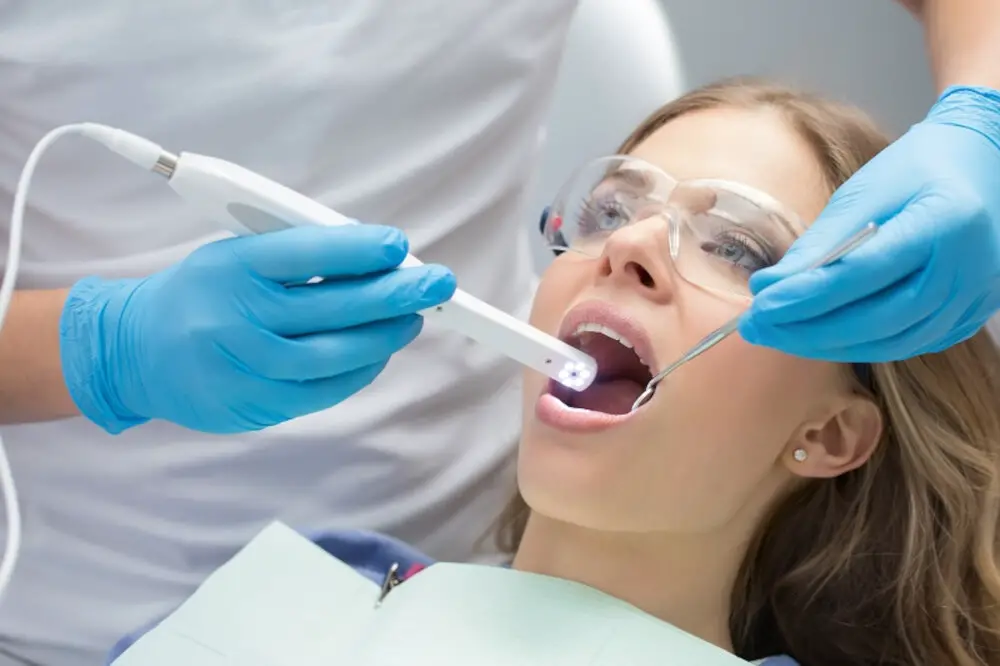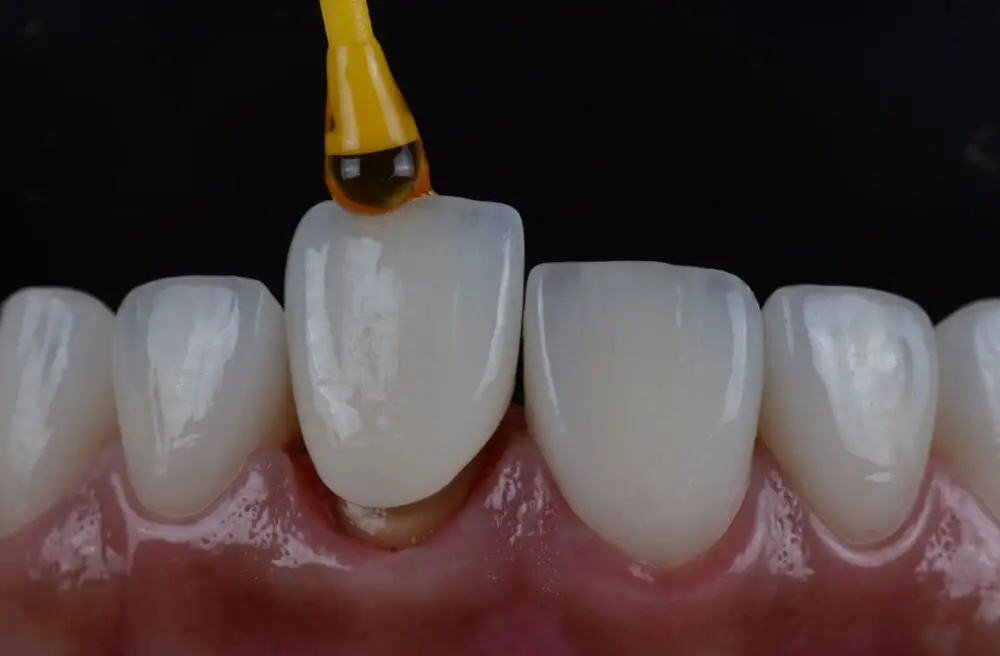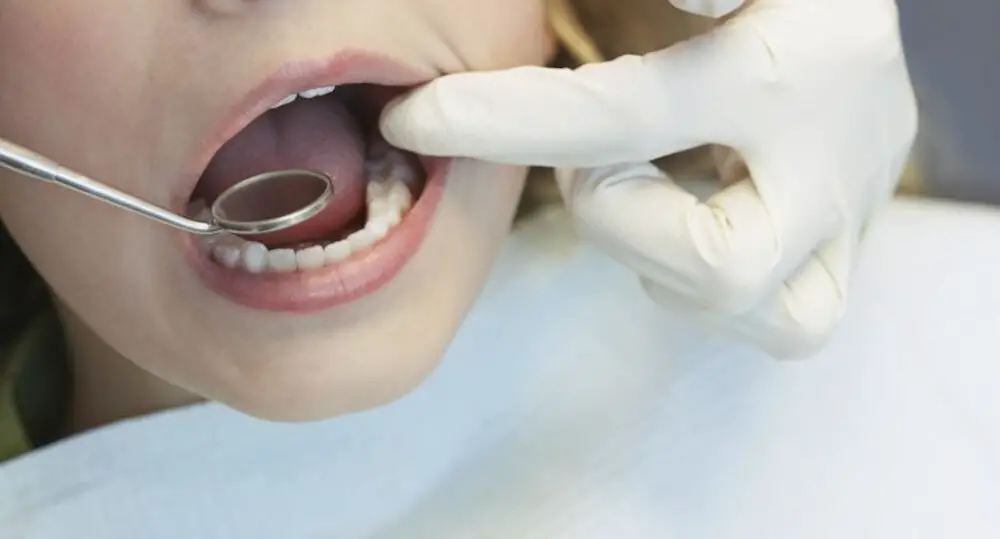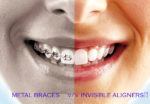Brace Yourself: Discovering How Long It Takes to Straighten Teeth

A beautiful smile can be a game-changer in both personal and professional life. It can boost confidence, enhance appearance, and make communication more effective. However, a crooked or misaligned set of teeth can be a source of embarrassment and self-consciousness. Fortunately, orthodontic treatments such as braces can help straighten teeth and improve dental health. But the burning question for many patients is how long it takes to straighten teeth through braces. The answer is not straightforward and depends on various factors, including the severity of the dental issue, the type of braces, and the patient’s adherence to treatment. In this article, we will delve into the details of how long it takes to straighten teeth with braces, what factors affect the duration, and how patients can optimize their treatment journey for the best results. Orthodontic treatments have come a long way in recent years, and braces are more comfortable, discreet, and effective than ever before. Braces work by applying gentle and constant pressure to the teeth, which gradually moves them into the desired position. The duration of the treatment varies from patient to patient, depending on several factors such as age, oral hygiene, and the complexity of the dental issue. While some patients may only need braces for a few months, others may require them for several years. Therefore, it’s crucial to have realistic expectations and understand that the duration of the treatment is not set in stone. Additionally, patients must be committed to the treatment plan and follow their orthodontist’s instructions to ensure the best possible outcome.
Orthodontic treatment is a specialized dental procedure that aims to correct misaligned teeth and jaws. It involves the use of braces, clear aligners, and other appliances to gradually move teeth into their proper position. This treatment is important not only for aesthetic reasons but also for improving oral health. Crooked teeth can be difficult to clean properly, leading to an increased risk of tooth decay, gum disease, and even tooth loss. Misaligned jaws can also cause discomfort, difficulty chewing, and speech problems. By correcting these issues, orthodontic treatment can help patients achieve a confident smile and maintain optimal oral health for years to come.
The purpose of the article \Brace Yourself: Discovering How Long It Takes to Straighten Teeth\ is to provide readers with a comprehensive understanding of the process of teeth straightening, including how long it typically takes and what factors can influence treatment time. The article discusses the various types of braces available, such as traditional metal braces, clear aligners, and lingual braces, and outlines the pros and cons of each. The author also delves into the importance of good oral hygiene during orthodontic treatment and offers tips for maintaining healthy teeth and gums. Overall, this article serves as a valuable resource for anyone considering orthodontic treatment or looking to learn more about the process of teeth straightening.
Factors Affecting Treatment Time

Orthodontic treatment is a long-term investment that requires patience, dedication, and commitment. The duration of orthodontic treatment varies from patient to patient and depends on several factors. One of the most significant factors affecting treatment time is the severity of the orthodontic problem. If the case is severe, it may take longer to correct than a mild case. For example, correcting a severe overbite, underbite, or crossbite can take longer than correcting minor spacing issues. Additionally, the age of the patient can also affect the treatment time. Younger patients with developing jaws may require longer treatment time to achieve optimal results compared to older patients with fully developed jaws. Another factor that affects treatment time is patient compliance. Patients who follow their orthodontist’s instructions and wear their appliances as prescribed are more likely to see faster results than those who do not. Orthodontic appliances such as braces or aligners need to be worn for a specific number of hours per day, and failure to comply with these instructions can lead to longer treatment times. Additionally, patients who maintain good oral hygiene and attend all their scheduled appointments are more likely to see faster results than those who do not. In summary, achieving good treatment outcomes requires a team effort between the orthodontist and the patient, and factors such as the severity of the case, the age of the patient, and patient compliance can all affect the treatment time.
The time it takes to straighten teeth can vary depending on several factors, such as the severity of the misalignment and the type of treatment used. Mild cases of misalignment may only take a few months to correct, while more severe cases may take up to two years or longer. Additionally, the chosen treatment method plays a significant role in the duration of treatment. Traditional metal braces are typically worn for a longer time than clear aligners or lingual braces. Other factors affecting treatment time include patient compliance with wearing appliances and attending appointments, age, and overall oral health. It is essential to consult with an orthodontist to determine the best treatment plan and expected duration for each individual case.
Several factors can impact the length of treatment when it comes to straightening teeth. One of the most significant factors is the severity of the misalignment. Patients with more extensive and complex orthodontic issues may require longer treatment times to achieve optimal results. Another factor is age; younger patients tend to respond more quickly to treatment since their teeth and jaw are still developing. The type of treatment also plays a role; traditional metal braces typically require longer treatment times than newer, more advanced options like clear aligners. Additionally, patient compliance is crucial in ensuring the success of the treatment. Patients who consistently wear their aligners or braces as instructed by their orthodontist are more likely to see results sooner than those who don’t. Overall, a combination of these factors can impact the length of treatment, and it’s essential to consult with an experienced orthodontist to determine the best treatment plan for your individual needs.
Average Treatment Times for Different Types of Orthodontic Treatment

Orthodontic treatment is a method of straightening teeth and correcting bite problems. The average treatment time for different types of orthodontic treatment varies depending on the complexity of the case. Generally, traditional braces take around 18-24 months to complete treatment. However, the duration may vary depending on the severity of the case. In contrast, clear aligners such as Invisalign take around 12-18 months to complete treatment. These aligners are a popular option among adults as they are virtually invisible and can be removed for eating and cleaning. However, they may not be suitable for complex cases that require more extensive treatment. Another type of orthodontic treatment is lingual braces, which are similar to traditional braces but are placed on the back of the teeth. This option is suitable for those who want to straighten their teeth without anyone knowing they are wearing braces. The average treatment time for lingual braces is similar to traditional braces, taking around 18-24 months. However, the treatment time may be longer for more complex cases. Ultimately, the duration of orthodontic treatment depends on various factors such as age, the severity of the case, and the type of treatment. It is essential to consult with an orthodontist to determine the best treatment option and expected treatment time for your specific case.
Orthodontic treatment options have expanded over the years, offering patients a range of options to straighten their teeth. Traditional metal braces are still commonly used and are effective in correcting complex dental issues. Ceramic braces work similarly to metal braces but are less noticeable due to their tooth-colored brackets. Lingual braces are placed on the back of the teeth, making them virtually invisible. Clear aligners, such as Invisalign, are a popular alternative to traditional braces as they are removable, clear, and offer more flexibility in terms of eating and oral hygiene. There are also accelerated orthodontic treatments that promise to speed up the straightening process, such as Propel and AcceleDent. With so many options available, patients can choose the treatment that best suits their lifestyle and preferences.
The average treatment times for each type of teeth straightening treatment vary depending on the severity of the dental issues and the type of treatment selected. According to research and expert opinions, traditional metal braces usually take around 18 to 36 months to straighten teeth. Clear aligners, such as Invisalign, have an average treatment time of 12 to 18 months, but this can vary depending on the complexity of the case. Ceramic braces, also known as clear braces, can take around 18 to 36 months. Lingual braces, which are placed behind the teeth, have an average treatment time of 18 to 36 months. Overall, it is important to consult with a dental professional to determine the best treatment option for your individual needs and to get a more accurate estimate of treatment time.
There are various reasons why some types of orthodontic treatments may take longer than others to straighten teeth. For instance, the severity of the misalignment can play a significant role in determining the duration of treatment. Teeth that are severely misaligned or overcrowded may require more time to shift into the desired position. Additionally, the type of orthodontic appliance used can also affect the duration of treatment. Traditional metal braces are often more effective in treating complex alignment issues but may take longer than clear aligners, which are designed for more minor misalignments. Moreover, patient compliance with treatment can also impact the duration of orthodontic treatment. Patients who follow their orthodontist’s instructions diligently and maintain good oral hygiene can often achieve their desired results more quickly than those who do not. Overall, the duration of orthodontic treatment depends on several factors that can vary from patient to patient.
Shortening Treatment Time

Shortening treatment time for orthodontic patients is a highly desirable goal for both patients and orthodontists. Traditional orthodontic treatment typically takes between 18 and 36 months to complete, which can be a significant investment of time and money for patients. However, advancements in orthodontic technology have led to the development of new treatment options that can significantly reduce treatment time. For example, accelerated orthodontics techniques can help speed up tooth movement by using high-frequency vibration or micro-osteoperforations. Additionally, clear aligner systems like Invisalign can offer a faster treatment time than traditional metal braces. While shortening treatment time is desirable, it is important to note that this should not come at the expense of quality results or patient safety. Orthodontic treatment requires careful planning and execution to ensure that the teeth are moved into their correct positions in a way that is healthy and sustainable. Therefore, orthodontists should carefully consider the risks and benefits of any technique or technology that promises to shorten treatment time. Ultimately, the goal of orthodontic treatment should be to achieve a healthy, functional, and esthetically pleasing smile for the patient, regardless of how long it takes to achieve this result.
Orthodontic treatment can be a significant investment of both time and money, so it’s understandable that patients are interested in ways to shorten the length of treatment. One strategy that has gained popularity in recent years is accelerated orthodontics, which involves using techniques such as micro-osteoperforation or vibrating devices to speed up tooth movement. Another important factor in shortening treatment time is proper oral hygiene, which helps to prevent complications such as tooth decay and gum disease that could slow down treatment progress. Additionally, maintaining regular appointments with your orthodontist and following their instructions for wearing and caring for your braces can also help to ensure that your treatment stays on track and is completed as quickly as possible.
When it comes to straightening teeth, there are several strategies available, each with its own set of benefits and drawbacks. One popular option is traditional metal braces, which are effective in correcting even the most severe cases of misalignment. However, they can be uncomfortable, require frequent adjustments, and may not be aesthetically pleasing to some patients. Clear aligners, on the other hand, are virtually invisible and can be removed for eating and brushing. Still, they may not be as effective for complex cases, and patients must be diligent in wearing them for the recommended amount of time each day. Lingual braces, which are placed on the back of the teeth, offer a discreet option, but they can be challenging to clean and may cause speech difficulties. Ultimately, the best strategy will depend on the individual’s unique needs and preferences, as well as the severity of their misalignment.
Patient Experience During Treatment

The patient experience during treatment is a crucial aspect of orthodontic care. Patients who undergo braces treatment have to wear them for an extended period, ranging from a few months to several years. During this time, patients may experience discomfort or pain, which can affect their quality of life. Orthodontists must ensure that they provide their patients with the necessary care and support to make the treatment process as comfortable and pleasant as possible. This includes educating patients on the different stages of the treatment process, providing them with pain relief options, and encouraging them to maintain good oral hygiene. In addition to physical discomfort, patients may also experience emotional stress during the treatment process. Wearing braces can be challenging, especially for young adults and teenagers who may feel self-conscious about their appearance. Orthodontists must take the time to listen to their patients’ concerns and provide them with the necessary emotional support. This includes addressing any issues related to self-esteem, providing encouragement and positive reinforcement, and helping patients overcome any fears or anxiety they may have about the treatment process. By prioritizing the patient experience, orthodontists can ensure that their patients feel comfortable and confident throughout the treatment process, leading to better treatment outcomes and increased patient satisfaction.
Orthodontic treatment involves the use of dental braces, clear aligners or other orthodontic appliances to correct misaligned teeth, and jaws. Patients should expect some level of discomfort during the initial stages of the treatment, as their teeth may feel sore or tender. Dietary restrictions may apply, and patients may be advised to avoid hard, crunchy or sticky foods that could damage or dislodge their braces or aligners. Maintaining good oral hygiene is crucial during orthodontic treatment, as braces and aligners can make it harder to clean teeth and gums, increasing the risk of tooth decay, gum disease or bad breath. Patients may need to use special tools, such as interdental brushes or water flossers, to clean between the wires and brackets of their braces.
Patients who are undergoing orthodontic treatment should be well informed about the process and its various aspects. It is essential for them to understand that the length of treatment varies based on the individual’s case, and it may take several months or even years to achieve the desired results. Patients should also prepare themselves for the physical discomfort that may occur during the initial stages of treatment. They must maintain good oral hygiene by brushing and flossing regularly and avoid sticky or hard foods that can damage their braces. Regular follow-up appointments with their orthodontist are also crucial to ensure that the treatment is progressing as planned. By being proactive and following their orthodontist’s instructions, patients can help ensure a successful outcome and achieve the beautiful smile they desire.
The article titled \Brace Yourself: Discovering How Long It Takes to Straighten Teeth\ discusses the various factors that impact the length of time it takes to straighten teeth. The article notes that the severity of the misalignment, the type of treatment chosen, and the patient’s age and oral health can all impact the duration of treatment. Additionally, the article explores the different types of orthodontic treatments available, including traditional braces, clear aligners, and lingual braces. The author emphasizes that while treatment times can vary widely depending on the individual situation, orthodontic treatment is ultimately worthwhile for achieving a healthy, beautiful smile.
It cannot be overstated how crucial it is to consult with an orthodontic specialist when considering teeth straightening treatment. Every patient has unique needs and circumstances, and a one-size-fits-all approach simply won’t cut it. An orthodontic specialist has the expertise and training to evaluate each patient’s specific situation and create a customized treatment plan that will achieve optimal results. They will take into account factors such as the severity of misalignment, the age of the patient, and any underlying dental or medical conditions. Additionally, an orthodontic specialist will be able to provide a realistic timeline for treatment and ensure that the patient understands what to expect at every stage of the process. Don’t rely on guesswork or internet research – trust the professionals to guide you on your teeth straightening journey.
Conclusion

In conclusion, the process of straightening teeth requires patience, dedication, and time. The length of time it takes will vary depending on the individual’s specific dental situation and the treatment plan recommended by their orthodontist. While the road to a straighter smile may be long, the end result is worth the effort. Straight teeth not only provide cosmetic benefits but can also improve overall oral health and function. So, brace yourself for the journey ahead and trust in the expertise of your orthodontic team to help you achieve the smile of your dreams.






